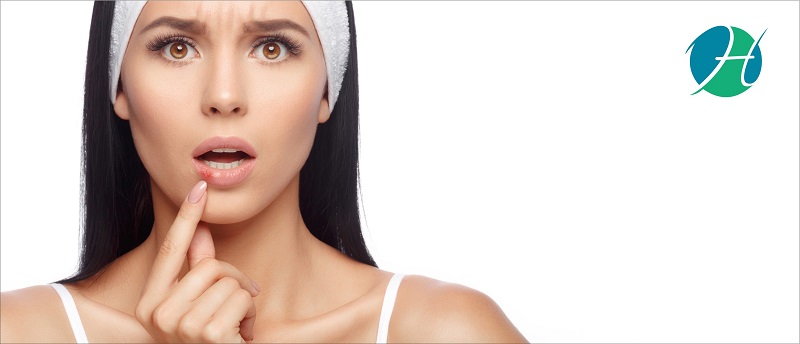Cold Sores: Symptoms and Prevention

A cold sore is the term used to describe small fluid filled blisters that appear on the face, usually when the individual has fever or some other illness. These are also commonly called fever blister for this reason.
Cause of Cold Sores
Cold sores are caused by an infection from the virus Herpes Simples Virus type 1 (HSV-1). This is different from HSV type 2 which is known to cause the Sexually Transmitted Infection (genital herpes), although HSV-2 can also cause cold sores.
The HSV-1 virus is transmitted through close contact like kissing, and also from sharing utensils and towels. Oral sex can cause spread of HSV-2 to the lips.
About 90% individuals demonstrate presence of infection, though many would not have had any prior symptoms.
Once infected, the virus remains in the body, where it is dormant in nerve cells until reactivated. Weakened immunity, fatigue, stress, hormonal changes and fever are all triggers to reactivate the virus, leading to appearance of blisters.
Symptoms of Cold Sores
The symptoms progress in the following sequence
- Burning, tingling and pain is initially felt around the lips
- Small blisters with fluid appear around the border of the lips
- Oozing from the blisters and crusting follows
- Clearing occurs within 2 weeks
The first attack of cold sores usually occur in childhood and is generally more severe than subsequent attacks. It is marked by the following symptoms:
- Fever
- Fatigue
- Headache
- Sore throat
- Swollen and painful gums
- Swollen lymph nodes
Recurrent attacks appear with triggers at the same location as previous blisters.

Diagnosis of Cold Sores
Diagnosis is generally made solely from clinical examination. Lab tests may be done on the blister fluid to confirm presence of viral particles.

Treatment of Cold Sores
Cold sores disappear on their own within 2 weeks of onset or once the triggering illness/event resolve. Cold compresses and moisturizing agents are helpful to reduce inflammation and prevent excessive drying.
The underlying infection from HSV is incurable.
The resolution of the cold sores can be augmented by taking antiviral medications such as acyclovir, valacyclovir, famciclovir etc. These may be recommended by a physician if the cold sores are causing severe pain and are very frequent.

Prevention of Cold Sores
The blisters are infective until they scab over. To avoid passing on the infection or catching it, the following recommended.
- Avoid sharing utensils, towels and other personal items
- Always wash and clean your hands before touching your face
- Avoid direct physical contact with an infected individual

References
- Cold Sores. American Association of Dermatology. https://www.aad.org/public/diseases/contagious-skin-diseases/cold-sores. Accessed April 4, 2019
- Klein RS. Treatment of herpes simplex virus type 1 infection in immunocompetent patients. http://www.uptodate.com/home. Accessed April 4, 2019.

